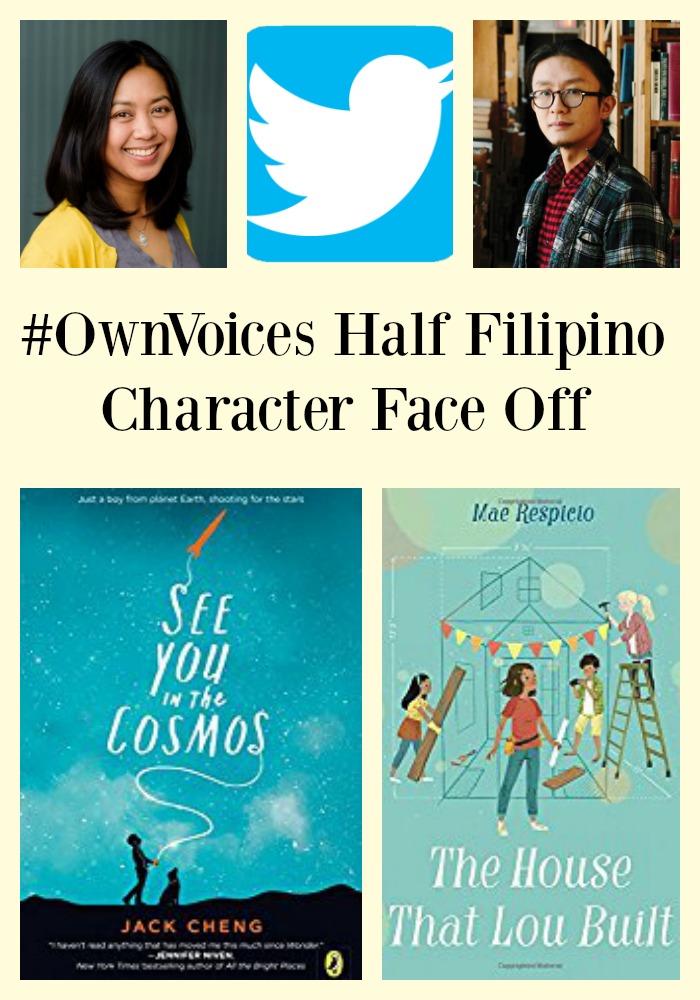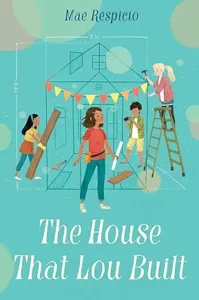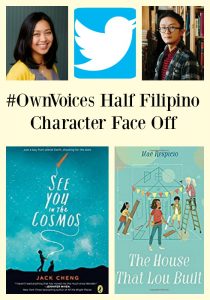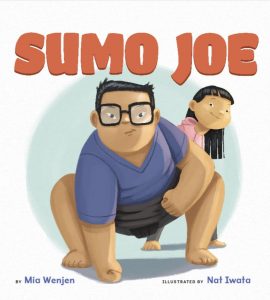I wanted to share a robust conversation that I had with two middle grade authors recently after posting this video that compared their two characters — both half-Filipino. One author is #OwnVoices and one is not. I have been tracking Filipino-American children’s books because I’m shocked and dismayed by how few there are. This is especially surprising given that Filipinos were one of the first and largest immigrant groups in the United States.
The scarcity of Filipino-American characters in middle grade books puts an additional burden, in my opinion, on the authors to convey authenticity about the culture. While it’s better to err on less than more for #OwnVoices, it’s also a missed opportunity.
My reference points in my commentary stem from being half Japanese/half Chinese American and married to a Korean. I know firsthand how being mixed race makes you realize how little you know about your own culture. Being Asian American does not make you an expert on all things Asian, especially if you step outside your own ethnic background.
My best friend growing up in Southern California is Filipina-American and I ate at her house too many times to count. In fact, I ate at her cousins’ house, at her Philipino church, and even at her Philipino Church sleepaway camp. Her mother taught me how to make Pancit. She taught me how to make adobo (pork, chicken, or both) the non-lazy way. You cook it all down until the liquid has evaporated and the meat browns in its own fat. Trust me, it is better than it sounds. The meat is falling off the bones tender, with lusciously deep in flavor with salt from the soy sauce, sour from vinegar, and garlic-y from a huge amount that has to be chopped fresh. I can also make “sour soup” or Sinagang thanks to her though we both use a packaged mix.
Her family always had food on the simmer on the stove or a table crowded with “aunties” preparing food. Her mom would always invite me to sit down and try the food. Kids ran in and out all day. Everything was delicious and also somewhat strange. (And I grew up eating in Chinatown!).
It is from this reference point that I read See You In the Cosmos by Jack Cheng and The House That Lou Built by Mae Respicio (out June 12, 2018), both with half-Filipino/half-white characters. But it’s here that the similarities end and the real discussion begins.
It’s just my luck that the app, Storify, is no longer available. Here’s the interesting discussion with both authors that transpired:
Was it of interest to you Jack to research Filipino culture in making Alex half-Filipino? I guess I am more and more of an #OwnVoices proponent when it comes to authenticity.
In my head Alex’s family settled on a mix of Filipino and generic American cuisine, and also that his mom made things that he never learned the names for. There was also a mention by Alex’s brother of needing to get pineapples at the store
I’m half Taiwanese and half Hungarian. Sometimes I wonder if being ‘only half’ Asian gives me the ability to use this voice in my writing authentically (I grew up with a huge Taiwanese side of the family). I’m still trying to sort this out.
There’s a lot of attention now on #OwnVoices and who can write from a minority/underrepresented/marginalized point of view. Does this main characters versus support characters? What if the author does extensive research? When is it ok? When is it not ok? There are as many opinions as there are questions. One thing for sure though:
If you write from a POC/marginalized perspective and you are from this culture, you get a pass with what you write. If you are not, expect scrutiny. Be wary of being called out. Expect to defend yourself, your characters, and your perspective. I think that is fair. Researching a culture is not something that is easily done by reading books or watching videos. It’s the accumulation of a lifetime of small moments. It’s memories, flavors, feelings, and reactions to what is happening around you. This is why Own Voices is so important.
Some people on Twitter thought it was surprising that an Asian American does not have a license to write outside of his/her specific ethnic experience. But Asian American and Pacific Islander is a false narrative of a “group” that really has very little in common. No shared language. No shared culture. No shared food. Ok, some. And a history of atrocities and animosities amongst countries and cultures that is a complicated tapestry to unravel.
But let me give you a flavor using food as an analogy for Japanese, Chinese and Korean and I feel most comfortable commenting on my own experience.
Japanese: Our food is all about bringing out the natural flavor and quality of the ingredients. We eschew strong flavors like hot peppers and garlic. That’s because we think we are the purest of the Asian people having descended from the Sun God. That’s right. It’s not mythology. We actually believe this which makes us superior.
Korean: For thousands of years, other countries have invaded us, trying to impose their culture on us, but we have survived thanks to spicy, garlic-y, and fermented food. Yes, that is kimchi but so much more. If you don’t like our food, it’s because you can’t handle it. We are stronger for it and feisty as hell. Just like our food.
Chinese: We invented spicy. And Sichuan is just one of our many regional food specialties. The umami that you prize in Japan? We invented it. Also, all the different ways of food prep. We invented it all. Everyone copied us from pasta to kiwis to booze. In fact, we brought cuisine to its highest art form. You are all wannabes.
To tackle how Asians feel about South Asians, I leave that to comic Ali Wong who is half Chinese/half Vietnamese American. She inspired this discussion about Asian interracial discrimination between Fancy Asians and Jungle Asians.
My final point is that Asians stigmatize mental health diseases. I wonder if Jack Cheng, consciously or unconsciously, felt uncomfortable portraying a Chinese character with a mental health disease and it was easier to cast this on a race he is less associated with.
p.s. If you are hungry for adobo, here’s an authentic recipe from Saveur Magazine.
p.p.s. Mae and I want to eat at this Filipino feast in NYC. Who else is in? It’s the last one featured in this Worth It Pork video.
p.p.p.s. More <heated> discussion on OwnVoices here.
To examine any book more closely at Amazon, please click on image of book.
As an Amazon Associate, I earn from qualifying purchases.
Follow PragmaticMom’s board Multicultural Books for Kids on Pinterest.
Follow PragmaticMom’s board Children’s Book Activities on Pinterest.
My books:
Amazon / Signed or Inscribed by Me
 Amazon / Signed or Inscribed by Me
Amazon / Signed or Inscribed by Me
Food for the Future: Sustainable Farms Around the World
- Junior Library Guild Gold selection
- Selected as one of 100 Outstanding Picture Books of 2023 by dPICTUS and featured at the Bologna Children’s Book Fair
- Starred review from School Library Journal
- Chicago Library’s Best of the Best
- 2023 INDIES Book of the Year Awards Finalist
- Green Earth Book Award longlist
- Imagination Soup’s 35 Best Nonfiction Books of 2023 for Kids
Amazon / Barefoot Books / Signed or Inscribed by Me




















Hi Mia. Thanks for sharing this interesting discussion! I’m Filipino – born and raised in the Philippines – but authentic representation of any Filipino related experience in books is very important to me. I myself am surprised at the lack of Fil Am stories out there – which is especially surprising for a people who loves to tell stories! Do encourage your friends who write picture books to submit to Lantana. Our submissions details are on our website: http://www.lantanapublishing.com
One tiny comment about your blog post – Is it typical and accepted in the Fil Am community to spell it as Philippino? That is never accepted in the Philippines – the English spelling for the language and the ethnicity is Filipino.
Thanks again for a fantastic blog!
I think it’s “Filipino” also.
What a great and respectful conversation between Mae, Jack, and Mia. Thank you for sharing!
Thanks Debbi. I tried to capture all the tweets but it was hard for me to locate them all on my Twitter feed. That’s the gist of the conversation at least. I captured Mae and Jack’s perspective which, I think, is the most important.
Such a thoughtful and much needed discussion, Mia–thanks for sharing it here with us!!
I’ve only read Cora Cooks Pancit, and there is definitely a dearth of Filipino/American books. At least things may now come to the forefront a bit with Erin Entrada Kelly’s Newbery win. I loved Hello, Universe, and heard her speak/read at the Gaithersburg Book Festival last year. Looking forward to reading You Go First, and Blackbird Fly (in my growing to-read pile!!)
Hi Maria,
I just found out that Erin Entrada Kelly has TWO books on the NY Times bestseller list as of today!! Both Hello, Universe and You Go First. Hopefully, this creates more interest in Filipino-American characters (besides hers) in the publishing world.
Hi Mia, thanks for raising the topic and highlighting these two books. A comment about the food — as a mixed-race Filipina-American myself, the Americanized food in Jack’s book sounds authentic to me.
My Filipina mom made the most Midwestern food you can imagine, right alongside the Filipino food. We grew up eating tuna noodle casserole and pancakes and lasagna and tapioca pudding, as well as lumpia and adobo and bistek tagalog and pochero. Baked porkchops and mashed potatoes weren’t unusual for us, in a mixed race household. Even in the Philippines, American food is a strong influence. Filipino families in the Philippines might opt for burgers over pancit at any meal, and it would sound accurate.
Hi Christina,
That’s a great point! I am mixed race too and we ate an amalgam of Asian and American food too. I guess I was just thrown that the half-Filipino character in SEE YOU IN THE COSMOS had so little reference to Filipino culture, given that his mother is an immigrant. Since the child was the primary caretaker cooking the food, I thought it would have been in the mix. I guess there is Spam and rice, but that is Hawaiian-American as well. If there was one mention of Filipino culture or food, even a memory of what his mother used to cook or that he missed something his grandmother prepared, I would have appreciated that reference. I actually barely caught that he was half Filipino. It was only the terms “Lolo and Lola” that made me notice. It felt like more Tell than Show in terms of writing. And also, why bother making a character half POC if it doesn’t mean anything? It’s like specifying blue eyes, green eyes, or brown eyes. Why even specific eye color if it doesn’t really matter in the story?